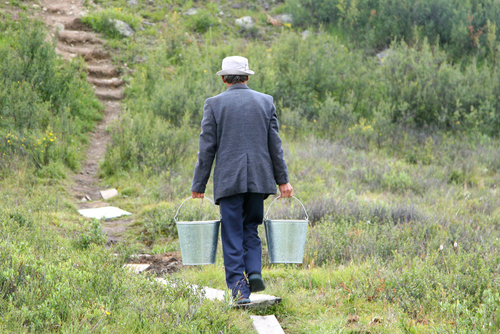

Editor’s Note: Read the first part of this article on mutual assistance group tasks and priorities here. You can also read every article in Charley Hogwood's series on mutual assistance group information here.
Daily Chores of Mutual Assistance Groups
In the daily routine members will be working together to provide for the common welfare of the mutual assistance group (MAG) through chores such as:
- Hygiene
- Child Care
- Education
- Sanitation
- Water Collection
- Food Production
Special Projects or Operations of Mutual Assistance Groups
Items in this category will be those irregular operations that may require that manpower be diverted from other areas. This may be a multi-day trip for hunting or scouting. It could be a spoiler attack on another MAG that is threatening.
Mutual Assistance Group Training
Somewhere in the schedule you will need to make the time for training. Since most members will not be competent in all skills, it will be imperative that a training program be initiated as soon as possible.
Building a Team and a Team Charter
Teams are a great way to accomplish complex tasks within the larger mutual assistance group. Friction can result, however, when they are all moving in different directions. It is imperative that a team work as one, especially when the chips are down. There is no room for independent action when everyone else expects you to act as a team.
This is where a Team Charter can help. The Team Charter is a document that defines what the purpose of the team is, how it is organized and what is expected from them. It is best to establish the charter as soon as the team is defined but it can be created later for a team that is struggling.
Begin by addressing three components:
- What is the reason for the team?
- What is the team expected to accomplish as a whole?
- Why is the team’s mission so important to the group and how does it fit into the overall mission?
The Directory of Skills
Many opinions are available on what makes a mutual assistance group work, but it all boils down to the quality of members, their level of preparedness and the skills they bring to the table.
So what kind of skills would serve a group in the aftermath of a long-term event?
- Blue Collar Skills
- Child / Elderly care
- Cooks
- Education / Teacher
- Food Production / Farming / Livestock
- Gunsmith/Reloader
- Ham Radio/Commo
- Hunters and Trappers
- Mechanically inclined personnel
- Mechanics
- Medical trained personnel
- Military/Security/Self Defense
- Primitive Survivalist or Homesteaders
- Scavengers
- Seamstress
- Solar/Alternate Energy
- Toolmaker/Engineer/Blacksmith

![Best Concealed Carry Guns In 2025 [Field Tested] Wilson Combat EDC X9S 1](https://gundigest.com/wp-content/uploads/Wilson-Combat-EDC-X9S-1-324x160.jpg)


![Best 9mm Carbine: Affordable PCCs [Tested] Ruger Carbine Shooting](https://gundigest.com/wp-content/uploads/Ruger-Carbine-Shooting-100x70.jpg)
![Best AR-15: Top Options Available Today [Field Tested] Harrington and Richardson PSA XM177E2 feature](https://gundigest.com/wp-content/uploads/Harrington-and-Richardson-PSA-XM177E2-feature-100x70.jpg)

I have been a follower of Charlie Hogwood for some time and based on his principles he laid out in M.A.G.S. I developed the “Bug Out Manual” available at http://bolmanual.com/index.html. It is designed to provide a full organization for a small to large group of committed Group Members. It is easily modifiable for each groups individual needs and covers a wide selection of organizational areas. Check it out and let me know your thoughts. If you like it you can get it from the Website above.